Israel’s kibbutzim: The reality of egalitarian ideals
I opened the map on my phone and found that I was getting closer to the border between Israel and Jordan. Going down from the mountains to the west of the Lake of Galilee, the bus drove all the way down the winding mountain road and finally came to the south of the lake. In addition to the olive trees that can be seen everywhere in Israel, there are large areas of date palms, avocados, and bananas planted on both sides of the road. Under the escort of green plantations, the bus finally arrived at today's destination - Sha'ar Hagolan Kibbutz, which is only about one kilometer away from the Jordanian border.
What is a kibbutz? Originally meaning "gathering", a kibbutz is a special collective community in Israel. Traditionally, kibbutz are mainly agricultural production, but they have important differences from ordinary rural communities. It can be said that from the establishment of the first kibbutz in 1910, they marked an attempt to create an alternative social life. In a kibbutz, members live a completely equal life: income is equally distributed among members, the kibbutz's property or means of production are collectively owned, and members help each other and cooperate together. (Near, The Kibbutz Movement , Vol1, 1992) Yes, when the kibbutz was founded, one of the most important principles was the egalitarian ideal of socialism.
From the establishment of the first kibbutz Degania on the south side of Lake Galilee, today approximately 270 kibbutzim have formed collective communities based on voluntary membership. The members' collective assembly is the "highest authority" in the kibbutz to decide on affairs. Members participate in the management of the community through direct democracy. Since its establishment, the egalitarian ideal at the heart of the kibbutz has been the familiar socialist principle: from each according to his ability, to each according to his needs.
Put down your luggage at the hostel and walk along the path lined with lawns and trees, passing through bungalows no more than two stories long, to the canteen of Sha'ar Hagolan. Members of the kibbutz will eat in the canteen, and meals are all buffet style. This seems to have been a staple of all kibbutz arrangements from the beginning, with the canteen serving as an important community meeting place for members.
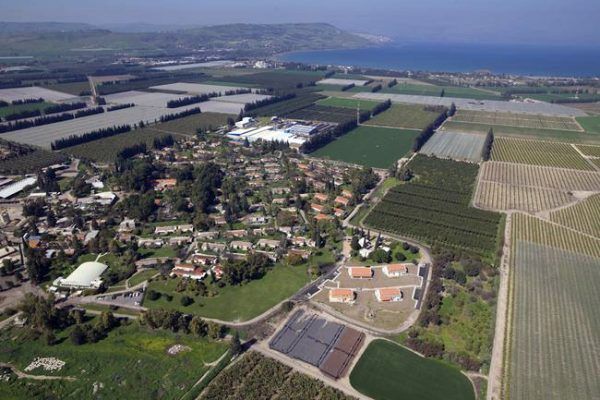

Early Kibbutz: Difficult Realization of Egalitarian Ideals
Due to increasing anti-Semitic pressure and the dramatic changes in the international situation before and after World War I, many European Jews migrated to Palestine. With the Second Wave of Aliyah (Jewish immigration movement) from 1904 to 1914, some pioneers who migrated back from Europe were founded driven by socialist ideals and Zionism (Zionism) There are many kibbutz, large and small. Life in the kibbutz established in the early days was relatively difficult. Most of the kibbutz were located in relatively isolated geographical locations at the time. Kibbutz, which were mainly agricultural, often faced arduous work in clearing land and planting. Many members faced diseases when the environment was harsh, and there was long-term hostility from nearby Arab villages. , the hardships these pioneers faced were enormous. Egalitarian community living was a necessary way of life at the time. Members work together to combat harsh conditions. Collective labor and equal distribution of labor income enable members to achieve a better life under the collective. At the same time, egalitarian distribution provides protection for members who are injured or sick due to labor, which is important for pioneering adventures.
Another important factor is that these pioneers themselves held fairly strong socialist and Zionist ideals. Zionism refers to the establishment of a Jewish state in the historical Land of Israel. The most influential among them is Labor Zionism (Socialist Zionism), which mainly originated in Central and Eastern Europe. Left-wing labor Zionism is deeply influenced by socialism and firmly believes that the establishment of the state of Israel must rely on the working class to establish Jewish communities in Palestine. Affected by this, the pioneers established kibbutz, and one of their important goals was to gradually establish a Jewish homeland here. After the establishment of the state of Israel, many of the borders were drawn based on the location of the kibbutz. In terms of social ideals, they reject capitalism and hope to establish an egalitarian society based on socialism. Sharing income and resources is an important means to achieve egalitarian ideals, and can even be an important goal. Different egalitarian theories may have different arguments.
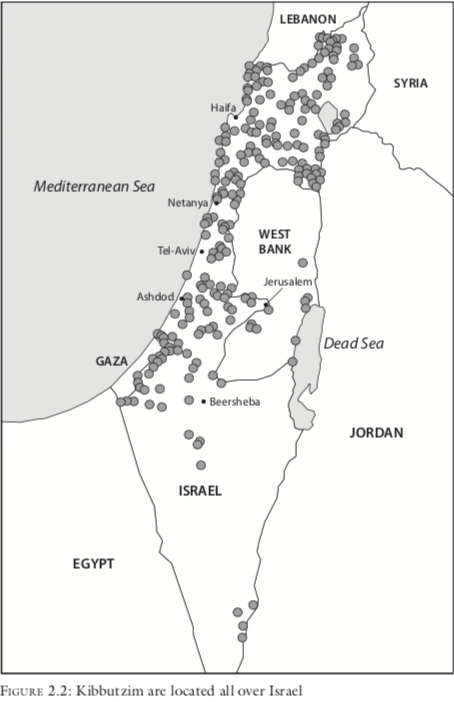
Under the influence of the egalitarian ideal of "from each according to his ability, to each according to his needs", early kibbutz implemented an equal distribution of income resources and at the same time rejected private ownership. Members had no personal property. There is no cash circulation within the kibbutz, distribution is based on need, and members eat together in the canteen. The kibbutz provides many public facilities that members share and use. In the early days, kibbutz also built independent children's residences. Children of members lived together instead of sleeping in their parents' homes, and at the same time received collective education provided by the kibbutz. Members work together in the kibbutz and are prohibited from hiring external non-member labor - according to socialist principles, wage labor is essentially a form of exploitation. (Abramitzky, The Mystery of Kibbutz , 2018)
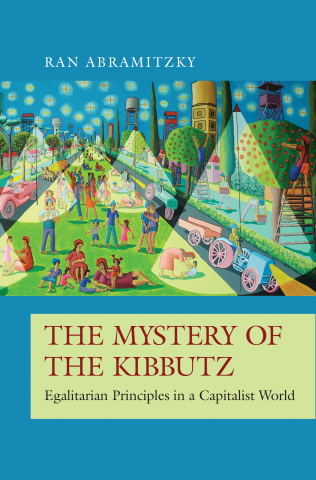
Of course, ideals alone cannot explain the establishment and long-term development of kibbutz. Stanford University economics professor Ran Abramitzky's new book " The Mystery of Kibbutz " published at the beginning of the year attempts to analyze the establishment and subsequent development of kibbutz from an economic perspective. According to Professor Abramitzky, there are two important economic factors that also affect the establishment of kibbutz and the maintenance of egalitarian lifestyle.
First, the economies of scale brought about by collective living enable kibbutz members to benefit more. It is difficult for a single individual to buy a piece of land in a remote area and live on it. He has to face many difficulties: Arab attacks, lack of funds, insufficient infrastructure, etc. On the contrary, when groups work together to build settlements, these problems can be solved more easily. At the same time, the shared kibbutz economy makes various production and services provided internally efficient. Because of collective living, public production can reduce the unit cost of raw materials and improve production efficiency. Especially driven by egalitarian ideals, members are more willing to work hard collectively. At the same time, the services provided within the kibbutz are also more effective due to scale. Food, laundry, child care, and public facilities in kibbutz are all provided to the collective in large quantities, which reduces individual costs. Kibbutz establishes collective canteens, laundry rooms, children's residences, cultural centers, etc., and members can obtain these services at a low cost. It is conceivable that women can be released from these traditional housework and participate in labor, which is also a very important impact.

In addition, the egalitarian model also brings important security functions to kibbutz members, especially economic security. The equally distributed lifestyle means that members no longer worry about losing a good life due to various misfortunes. When members get sick or the family loses important labor, their lives are also guaranteed by the life services provided by the collective. One of the key rules in the kibbutz movement is to "provide members and their families with economic, social, cultural, educational, and personal needs, and ensure a decent life for members and their families." (Abramitzky 2018) In Kibbutz In the early days of its establishment, we faced a difficult environment and an uncertain future. In a sense, it was like the "veil of ignorance" mentioned by Rawls in "A Theory of Justice". Most of the pioneers came from the same background and were in the same economic situation. , faced with hardship and uncertainty, it is natural to choose an egalitarian lifestyle that can provide mutual protection.
The development of kibbutz: the flourishing of egalitarianism
Many of these features of the kibbutz's early days remain today, despite changes over the decades, such as Sha'ar Hagolan's canteen. Friday night happened to be the beginning of the Jewish Sabbath, and the cafeteria was full of members taking a break from get off work. There are old people and young adults among the members. A father pulled a wooden cart into the canteen. Lying on the wooden cart was his daughter, who had tubes inserted into her body and was connected to the instruments on the wooden cart. After everyone greeted their father, they also greeted the little girl. The little girl couldn't raise her hand in response to the greeting, but she could still put a smile on her face. Another member working in the cafeteria couldn't move one hand freely. He squatted down with his head sideways, grabbed the little girl's hand with his other hand, and chatted with her. After taking their meals, the members sat in the spacious cafeteria and chatted and ate. Candles are lit on one side of the refectory to mark the beginning of the Sabbath.
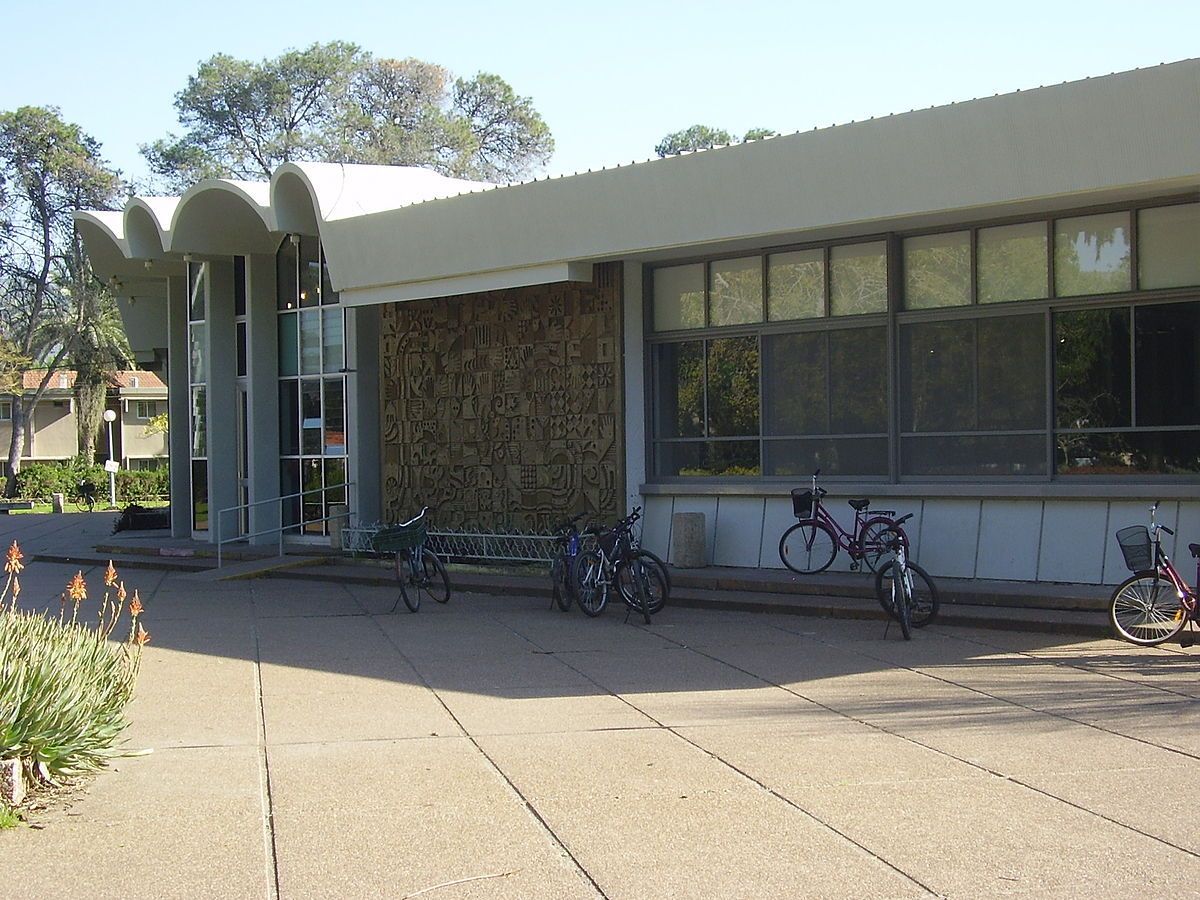
In addition to agricultural industries such as planting and breeding, Sha'ar Hagolan Kibbutz also has plastic product factories, which mainly produce cross-linked polyethylene pipes (PE-Xa pipes), which are the main economic income of the entire kibbutz. Of course, Sha'ar Hagolan also provides hotels and develops tourism. After the kibbutz industry diversified, members worked in different industries.
Most kibbutzim have also diversified their industries during the development process, expanding from being mainly engaged in agriculture in the past to a variety of different industries. In addition to increasing income, the diversification of the kibbutz economy also brings more security to members. When kibbutz members are engaged in different positions in different industries and have more diverse abilities, the kibbutz's overall ability to face risks will increase. For example, when avocado cultivation is in recession, the income of plastic factories will not be affected, and the kibbutz economy as a whole can also be stable. After the establishment of the state of Israel, the government provided formal unemployment insurance, and the kibbutz's egalitarian approach changed to comprehensive support to ensure members' living standards.
From the original 12 kibbutzim with 805 members in 1920, after the founding of the state of Israel, there were 214 kibbutzim in 1950 with a population of 660,000 members. Even in 1980, there were 255 kibbutz in the country with a population of more than 11 With over 10,000 members, kibbutz ushered in a period of vigorous development. (Abramitzky 2018) Most of the first-generation kibbutz members are Jewish immigrants from Europe. They have witnessed wars, oppression, and massacres, and many of them hope to build a new ideal home in Palestine. Most kibbutzim were also established in the 1930s and 1940s. Kibbutz's contribution to Israel's economy is crucial. In the 1950s, kibbutz agricultural production was the main part of Israel's agricultural production, and due to economies of scale, kibbutz were more capable of introducing more efficient large-scale machinery than private farms. At the same time, because they refused to hire outside labor in principle, kibbutz were more motivated to develop new technologies and created many new agricultural production methods, including the later famous drip irrigation technology. In terms of industry, since the 1960s, kibbutz has had more than 100 factories, ranging from food processing and furniture production to plastic, rubber, metal, and electronic products, all of which have made significant contributions to Israel's industrial development.
The living standards of kibbutz members also began to exceed the Israeli average. By the 1970s, kibbutz members could live in better housing, enjoy beautiful parks and greenery, and modern amenities. At this time, the kibbutz aimed at complete equality among its members and seemed to gradually realize its original egalitarian ideal.
Problems faced by kibbutz: The difference between ideal and reality
Kibbutzim, which thrive on ideological ideals and economies of scale, also face ideological and economic challenges.
The kibbutz established in the early days with egalitarian ideals relied heavily on the members themselves to recognize this ideal and devote themselves to the cause of egalitarianism. But as time goes by, as the first generation of pioneers grow older, the new generation of kibbutz members’ identification with collectivism will gradually diminish. This may be some kind of historical necessity.
In a kibbutz, the first problem that arises is the intrusion of collective life into personal privacy. Because collective community life is encouraged, members live, work, and eat in the same place, and the private space that can be maintained between each other becomes very narrow. At the same time, collectivist life means that individual work choices, food, clothing, housing and transportation preferences are all directed by the collective. Even early members left because they couldn't stand the constriction of personal freedoms. The new generation of kibbutz members are influenced by more individualism and have a relatively weaker identification with collective command.
In addition, the reduced identification with collectivist life is also reflected in the denial of the children's residential system by the new generation of kibbutz members. Parents began to prefer that their children could live with them instead of having limited parent-child meetings every day. After intense discussions, most kibbutz farms abolished the child sharing system, and children began to live with their parents.
These ideological changes not only affect members' recognition of egalitarianism, but also bring about or enhance economic problems of varying degrees. When the child sharing system is abolished, kibbutz will need to expand or rebuild family homes so that families with children can stay comfortably. To this end, the kibbutz needs to provide more credit to the government and banks. After the founding of Israel, labor Zionism has become the mainstream in Israel. Those who have been in power for a long time include the left-wing Israeli Land Workers' Party (Mapai) and later the Israeli Labor Party. Most of the leaders came to the Palestinian areas during the Second Aliyah Movement, including Israel's first Prime Minister David Ben-Gurion. . Therefore, the left-wing government will naturally provide more support to kibbutz and provide them with cheaper credit. However, this also planted the seeds of the subsequent kibbutz crisis.
On the other hand, kibbutz members hope to gain greater personal freedom and decide on personal study, life, and work. There is no cash circulation within the kibbutz, and members do not have personal bank accounts. However, in order to meet the requirements of members, many kibbutz have begun to introduce a personal budget system. For example, each member has a certain amount of budget every month, which can be used in the kibbutz. Shops in Buzne exchange items for clothing, furniture, personal items and more. Members are free to "purchase" items according to personal preferences, and at the same time, private property is introduced in kibbutz in disguise.
The bigger question about kibbutz is still the egalitarian economic arrangement, the first of which is the "free-rider problem". Because of equal distribution, no matter how much work an individual does in any position, the income she receives is constant. Why should that person put in all his effort when his income won't change if he pays less at work? Similarly, since food in the canteen is freely available and the electricity bill for the room is paid collectively, why do individuals need to save? Free riding and related issues are relatively common questions about egalitarianism. A 100% egalitarian kibbutz may have to face a more serious free-rider problem. However, Professor Abramitzky’s research points out that kibbutz members are not actually as full of free riders as everyone imagines. According to Israeli census data for many years, among the working hours reported by individuals, kibbutz members work an average of more hours per week than Israel’s urban population and non-kibbutz rural populations. In addition, based on 1995 data, Professor Abramitzky found that more than 85% of kibbutz members aged 25 to 69 participated in work, far exceeding the non-kibbutz population. Of course, these are not the best statistics. Individual reports may be falsified, and it does not rule out that some people will always free ride. When these data do reflect, the free rider problem in kibbutz is not as big as imagined, and it will not be broken. Egalitarian functioning of the kibbutz.
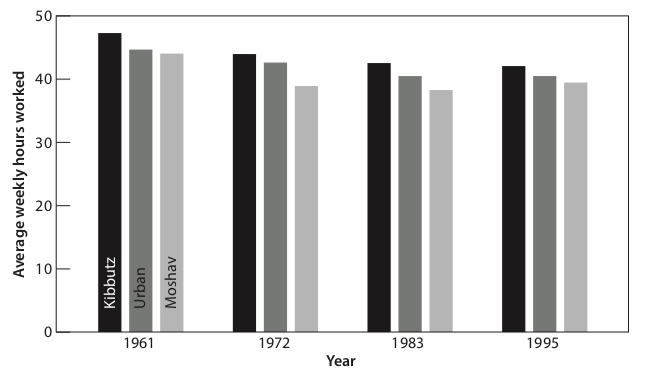

Other economic problems, such as brain drain and reverse recruitment, were also not a big problem for kibbutz during the boom period. However, when the kibbutz crisis occurred in the 1980s, everything seemed to be different.
Kibbutz Crisis: The Loss of Ideals in the Face of Reality
At the southern border of Jerusalem and Bethlehem, which is also on the border with Israel, Ramat Rachel Kibbutz overlooks the Tomb of Rachel in Bethlehem from a distance - the place where Rachel, the wife of the Jewish ancestor Jacob, is buried. In addition to large plantations and member bungalows, unlike Sha'ar Hagolan, Ramat Rachel Kibbutz looks much more modern and has a rather luxurious resort hotel. Dotan, the person in charge of the hotel and cherry cultivation, said that he leads the world in cherry production and exports it to all over the world. At the same time, the high-tech industry developed by Ramat Rachel Kibbutz provides precise counting and packaging technology for agriculture, medicine, and diamond processing industries. More than three times, Dotan proudly said that they still maintain an egalitarian lifestyle and have no money, but are very wealthy.
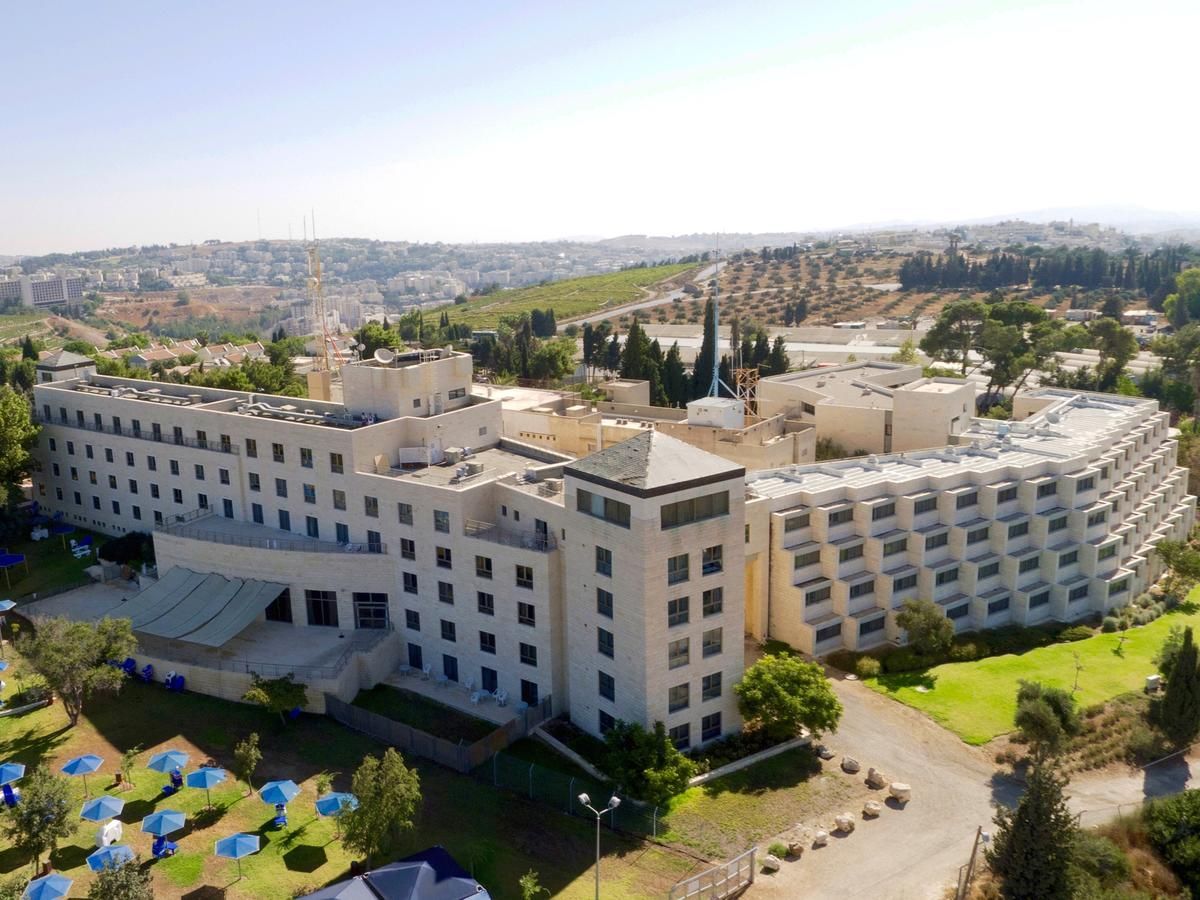

However, not every kibbutz can do this now. The kibbutz crisis that emerged in the 1980s forced most kibbutzim to undergo reforms and began to gradually move away from the original operation of egalitarianism.
Under the Israeli Labor Party, kibbutzim gained many advantages. The left-wing government provides a lot of support to socialist kibbutz, including the low-interest credit mentioned above, government subsidies for kibbutz products, and under Israeli tax law, kibbutz only need to pay taxes according to the average income of members, so Kibbutz members avoid many of the taxes they would otherwise have to pay under Israel's progressive tax system. However, after the 1977 Israeli elections and the right-wing Likud party came to power, it gradually began to reduce funding for kibbutzim. The subsequent economic crisis hit the kibbutz even more.
In the 1970s, the left-wing coalition government faced various internal and external troubles. The first is the Fourth Middle East War, pitting Israel against a two-state alliance of Egypt and Syria. This war caused great repercussions in the country, especially domestic dissatisfaction with Israel's inadequate pre-war preparations, which set off a series of protests. The Supreme Court immediately launched an investigation. Under pressure from the investigations and protests, Israeli Prime Minister Golda Meir (Israel's first female prime minister) eventually resigned.
The war also triggered retaliation from the Organization of Arab Petroleum Exporting Countries, which initiated an oil embargo against countries that supported Israel, triggering the first oil crisis. Under the influence of the oil crisis, Israel's external economy has been affected, and the already serious inflation has further deepened. In addition, there have been multiple corruption scandals within the Labor Party, involving many high-level officials within the government, which has caused varying degrees of governance crisis for the left-wing alliance dominated by the Labor Party.
On the other hand, 30 years after the founding of Israel, the demographic composition began to undergo major changes. Jews (and their descendants) who immigrated to Israel from Middle Eastern countries and Spain and Portugal have become the majority of Israeli Jews. The left wing of the Labor Party is mostly composed of Eastern European Jewish immigrants. The majority of the population are not adequately represented to have their interests looked after, and Labor is seen as a political ruling elite. Likud completed the revolution by mobilizing this neglected majority and winning the election.
In contrast to the socialism and cosmopolitanism of left-wing Zionism, the mainstream of right-wing Zionism believes in a stronger nationalism, the main representative of which is Revisionist Zionism founded by Ze'ev Jabotinsky (revisionist zionism). Jabotinsky firmly believed that the left-wing Zionist strategy of gradual evolution through the establishment of communities was unrealistic, because Zionism was essentially a colonial movement. In order to ensure the establishment of a state, in addition to various cultural measures, a strong military was a necessary condition. . Only with the support of a strong military could the Arabs in Palestine be forced to accept large-scale Jewish immigration. Revisionist Zionism and the Likud Party that later developed held stronger nationalism and took a tougher stance against Arab countries. For example, Likud's first prime minister, Menachem Begin, insisted on Israel's control of the Gaza Strip and the West Bank and the development of more Jewish settlements. Internally, Revisionist Zionism insists that the establishment of the state of Israel represents the establishment of a Jewish nation-state, which in a sense refuses to share power with Arabs. On the one hand, it expresses the tolerance of Arabs in democratic Israel, and on the other hand, it ignores Arabs’ opposition to Opposition to Jewish settlements.
According to data cited by Professor Abramitzky, in the early 1980s, the kibbutz economy's annual income reached US$2 billion, with a surplus of US$120 million, and its assets far exceeded its liabilities. At this time, Israel faced an economic crisis. Inflation was severe in Israel at that time, with the annual inflation rate climbing from 131% in 1980 to 500% in 1985. (Near, The Kibbutz Movement , Vol2, 1997) At the same time, Israel's tax rates were high and commodity exports were reduced. Many production industries, especially agriculture, were severely affected. It was under such circumstances that the kibbutz crisis emerged.
During the period of vigorous development, kibbutz used large amounts of loans to develop production, expand living areas, and provide more public facilities. At the same time, the government implemented a series of stabilization measures to control inflation, causing kibbutzim, which originally relied on inflation to ease the pressure of loan repayment, to face very high interest rates. By 1984, the kibbutz's annual surplus turned into a deficit, with a deficit of US$165 million. By 1988, total kibbutz liabilities were approaching $5 billion. (Abramitzky 2018, and Near, 1997) Even if part of the debt was eventually canceled or restructured through negotiations, the kibbutz was still mired in crisis. The living standards of kibbutz members plummeted. A series of major issues directly affect the lives of kibbutz members and the survival of the kibbutz.
As average living standards decline, there is a serious brain drain within the kibbutz. When external life prospects such as income expectations and life security are higher than internal ones, kibbutz members may choose to leave the kibbutz, especially members with higher education or higher technical levels. When the kibbutz crisis came, the living standards of kibbutz members dropped significantly. At the same time, Israel gradually began the rapid development of high-tech industries, making the prospects of urban life gradually higher than those of most kibbutz. Furthermore, when there is an economic crisis, the living security that kibbutz can provide will also drop significantly, and there may even be a serious shortage of pensions. Because members do not have personal accounts, retirement security is provided by the kibbutz. However, when the kibbutz cannot afford it, the members have no savings, and even the houses they have lived in all their lives do not belong to them. The basic social insurance funds provided by the government are not enough to sustain them. All life. According to data discussed in the Knesset, by 2010, 30% to 50% of kibbutz members will be retired. The older generation of kibbutz members will face serious problems. The living security will no longer attract the new generation of members to stay, the kibbutz will no longer be able to retain kibbutz members, and the brain drain will become serious. In turn, the high level of labor loss has aggravated the life problems of the older generation of kibbutz members, and it is difficult for kibbutz members without sufficient high productivity to provide adequate life security.
It was as if the kibbutz members were abandoned in the storm overnight, and the blow was huge.
Kibbutz Reform: Gradually Moving Away from Egalitarian Ideals
In order to survive, the kibbutz had to carry out fundamental reforms. Privatization began to gradually occur in various kibbutzim in the 1990s. The purpose of the privatization reform is to try to ensure the egalitarian principles of the kibbutz while getting rid of the current economic crisis as much as possible. The core idea, proposed by Yehuda Harel, is to separate the kibbutz's economy and community life.
Improving efficiency is the primary goal. In terms of daily consumption in kibbutz, in order to reduce the waste caused by equal distribution, most kibbutz began to implement privatization reform of services. For example, in the past, the electricity bill was collectively paid by the kibbutz, but now it is the responsibility of individuals and families. Some kibbutz began to reform the collective canteen, and 20% of the kibbutz even contracted out the canteen to reduce food waste. Many services are privatized to achieve resource savings, but core egalitarian services are still collectively provided by the kibbutz, such as medical care, child care, cultural centers, etc., to ensure that the principle of equality remains unchanged. The kibbutz will also establish a special fund to help members in urgent need of care. (Abramitzky, 2018) Kibbutz also increased individual members’ monthly allowance quotas and encouraged members to take responsibility for their independent lives. By 2001, 70% of kibbutz began to charge members for dining in collective canteens.
In terms of production, in order to improve efficiency, most kibbutzim began to privatize their production departments and service departments, and implemented the separation of economy and community life. Most kibbutz factories and farms set up independent branches with the main goals of maximizing profits and reducing costs. This kind of operation is completely to change the economic aspect into a capitalist model, allowing the production department to make operational decisions independently of the kibbutz as a whole. Some kibbutzim even hire professional managers from outside with high salaries to manage their properties. The production department of the kibbutz can operate at a certain level regardless of the kibbutz's collective lifestyle. Community life within the kibbutz is still determined by the kibbutz members. Even some kindergartens and schools in kibbutz areas have been found to be a waste of resources by professional managers. Full utilization of resources can be achieved by opening enrollment to children from residents living around the kibbutz. On the one hand, it improves economic efficiency, and on the other hand, it also improves the efficiency of the kibbutz. It's reputation in the nearby area. (Near, 1997)
For members, in order to better retain members to contribute to the kibbutz, a variety of measures are implemented at the same time. Most kibbutzim began to allow more members to work outside the kibbutz, and encouraged members to obtain higher education and take higher-paying jobs. At the same time, the kibbutz also encourages members to establish new business departments within the kibbutz and provide extensive open source for the kibbutz. In addition, kibbutzim have also begun to hire external labor on a larger scale to supplement the low-skilled jobs vacated by losing members.
Reforms further away from equal distribution occurred when kibbutz began to introduce a member income differential system. In order to improve production efficiency and retain high-quality labor members as much as possible, kibbutz began to implement income reforms that reflected the market, providing different incomes to kibbutz members by referring to the salaries in the market for similar positions with the same educational level. Members working outside the kibbutz retain a larger portion of the income they earn, while members working inside the kibbutz receive differential pay based on the new standards. Those members who can bring higher income to the kibbutz will also receive higher income. And according to different academic qualifications, members will receive corresponding income.
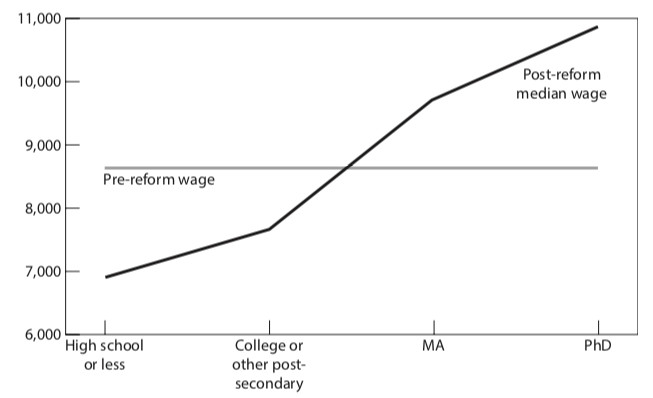
Nothing could be farther from the kibbutz’s original ideal of equal distribution than the income differences among its members. Jealousy began to arise among the kibbutz members. Members of the older generation have devoted decades to the kibbutz to provide high-level living and high-level education for the new generation. In the end, members of the new generation receive much more rewards than the older generation, which makes many older members feel unfair. Some members sued their kibbutz over what they felt was an injustice.
Of course, the degree of reform varies from kibbutz to kibbutz. Poorer kibbutzim had to sacrifice the ideal of equal distribution to ensure survival, while wealthier kibbutzim were able to maintain egalitarian living arrangements to a greater extent. Most kibbutzim retain a bottom line of living security and provide members with minimum income guarantee, basic medical care, social insurance, public facilities, etc. Wealthier kibbutz, perhaps like Ramat Rachel where Dotan is located, can still maintain an evenly distributed arrangement model and continue to live a life of wealth without money. In addition to affluence, members' recognition of egalitarian ideals will also affect whether a kibbutz can maintain a high degree of egalitarian arrangements after reform. But it is undeniable that the reforms after the crisis have caused the kibbutz as a whole to deviate from the socialist and egalitarian ideals of the early days of its establishment.
Kibbutz today
While dining at Ramat Rachel's restaurant, I saw Dotan sitting next to him who was sweating profusely. Recalling that he was proud to introduce how the cherries grown by Ramat Rachel have revolutionized technology to improve production and exported to the world, he himself is often invited to introduce new cherry planting technologies around the world. At the same time, I also thought of the little girl sitting on the wooden cart in the Sha'ar Hagolan canteen. After her father had eaten, he pulled her wooden cart home on a road lined with lawns and trees on both sides, drifting away in the dusk.
The kibbutz has gone through a century of vigorous development and serious crises, and it continues to survive in new ways today. The earliest egalitarian ideals have been realized in different ways over the past hundred years, and they also encourage us to constantly think about what the reality of egalitarianism should look like.
A modified version of this article was first published in The Paper Thought Market
Like my work? Don't forget to support and clap, let me know that you are with me on the road of creation. Keep this enthusiasm together!



- Author
- More